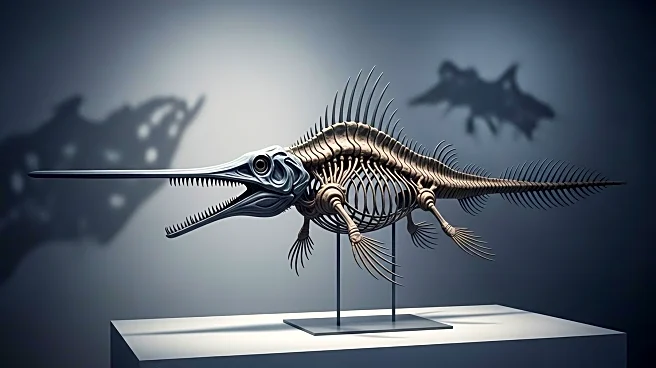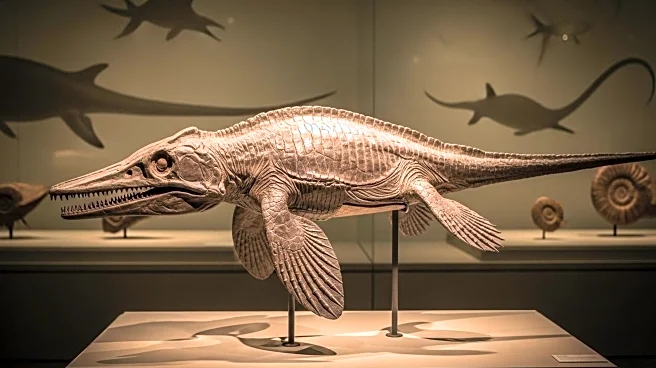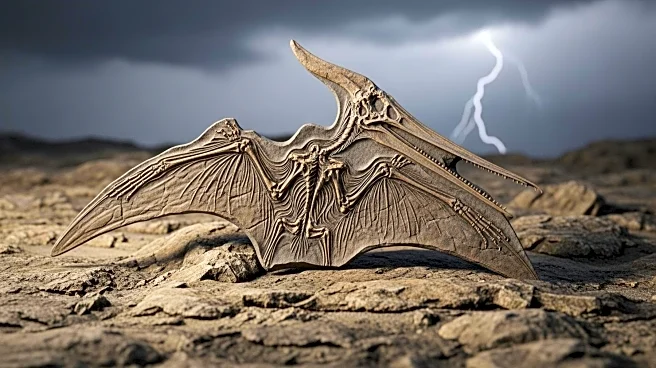What is the story about?
What's Happening?
An international research team from Switzerland and Germany has identified a new species of ichthyosaur, named Eurhinosaurus mistelgauensis, based on fossils found at the Urwelt-Museum Oberfranken in Bayreuth, Germany. The discovery was published in the open-access journal Fossil Record by the Museum für Naturkunde Berlin. The species is notable for its elongated upper jaw, resembling the overbite of modern swordfish, and differs from previously known species due to its robust ribs and unique skull-neck joint features. The fossils were excavated from the Mistelgau clay pit, a site known for its dense accumulations of Jurassic cephalopod remains, referred to as 'belemnite battlegrounds.' The research highlights the scientific importance of the Mistelgau locality in understanding Jurassic marine ecosystems.
Why It's Important?
The discovery of Eurhinosaurus mistelgauensis adds significant knowledge to the understanding of Jurassic marine ecosystems, providing insights into the diversity and evolutionary adaptations of ichthyosaurs. These marine reptiles, which share body shape similarities with dolphins and tuna, are crucial for understanding the ecological dynamics of the time. The Mistelgau site continues to be a valuable resource for paleontologists, offering rare insights into a period that is not well-documented globally. The findings underscore the importance of fossil collections in museums for advancing scientific research and education.
What's Next?
Further studies on the Mistelgau material are planned, including analyses of injuries preserved in the ichthyosaur skeletons. These studies aim to shed light on the ecology and life history of these ancient marine reptiles, potentially revealing more about their behavior, interactions, and environmental conditions during the Jurassic period. The ongoing research at the Mistelgau site may continue to uncover new species and contribute to the broader understanding of prehistoric marine life.
Beyond the Headlines
The naming of a new species emphasizes the role of museum collections in preserving and studying ancient life forms. It highlights the ethical and cultural importance of maintaining and exploring fossil sites, which serve as windows into Earth's distant past. The discovery also raises questions about the evolutionary pressures that led to the development of unique anatomical features in ichthyosaurs, offering a deeper understanding of convergent evolution.
AI Generated Content
Do you find this article useful?















